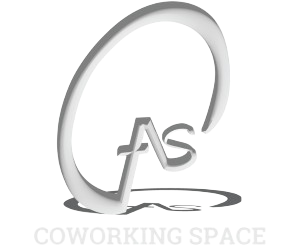
Coworking Space vs Traditional Office: Finding the Perfect Fit for Your Work Style
Modern work environments are not standard-fit-all workplaces. The days are gone of every employee having their desk at a big workplace. The modern workforce is based on flexible working, collaborative work, as well as a workplace which encourages innovation and creativity. This is the reason for the growth of coworking workspaces, which offer an attractive alternative to traditional workplaces.
But both options offer distinct advantages and disadvantages.
Which one is the right fit for you?
The Traditional Office: Stability and Control
The office of the past has been the foundation of a professional scene for decades. It provides a sense of security and stability, with an established space, encouraging collaboration and an enlightened corporate philosophy. Below is a summary of its principal benefits:
- Security and Privacy: The traditional office has dedicated areas, providing privacy when making calls or focusing on working. Companies have full control over their arrangement and layout, which can be customized to reflect their branding as well as their style of living.
- Team Building and Camaraderie: Sharing the same space in a physical setting can create an enduring feeling of team spirit as well as friendship among coworkers. Face-to-face interactions can enhance the communication and collaboration of employees as well as the culture of your company.
- Establishment of Infrastructure: The traditional offices are equipped with necessary infrastructures, such as furniture and utilities like internet access and, in most cases, catering services. It eliminates the requirement to make an initial investment, and also the installation time.
- Ideal for specific needs: Traditional offices could be perfect for small businesses that need special equipment or the highest regard for the confidentiality of clients. A dedicated storage area and controlled access could be an important advantage.
However, traditional offices also come with drawbacks:
- Limited Flexibility: The traditional leases typically make businesses sign lengthy contracts, making it hard to expand or decrease rapidly. This inflexibility could be a problem for small businesses or those with constantly changing requirements.
- High Costs: Renting office space, as well as furniture equipment, furniture, and utilities, are a major cost. This could be a problem for small or new businesses that have limited budgets.
- Long commutes: Employees frequently must endure long journeys to work that can impact work-life balance as well as productivity.
- Limited Opportunities for Networking: Traditional offices can restrict exposure to innovative ideas as well as people from outside the organization.
The Rise of Coworking Spaces: Flexibility and Community
Coworking spaces are a vibrant working environment that is ideal for both individuals as well as businesses looking for flexibility and an atmosphere of belonging. What they can provide:
- Flexible and Scalability: Coworking places offer different membership plans including Hot desks (flexible seating) to desks with dedicated seating as well as private office spaces. Business owners can effortlessly expand their workspace or down as the needs of their customers change.
- Cost-Effectiveness: In comparison with traditional office spaces coworking spaces provide huge savings on costs. The members pay for only their space and are free of the hassle of leasing contracts for long periods and the upfront cost of investment.
- Opportunities for networking: in coworking spaces is a great way to connect the diverse professional community across different fields. Collaboration, knowledge sharing and the possibility of partnership opportunities for business. Workshops, events and other activities organized by coworking spaces strengthen these connections.
- Connection and belonging: The remote worker can be feeling lonely. Coworking spaces foster a lively group of people who can connect as a group, meet, and develop lasting connections. A sense of belonging greatly boosts your morale and overall well-being.
- Modern amenities and technology: Coworking spaces usually provide the latest technology in high-speed internet access, printing facilities, as well as conference rooms and business support services. They also have unique amenities including fitness centers as well as nap pods and relaxing zones.
But, coworking space might not be the best option for all:
- Insecurity: Unsecured flooring plans, as well as shared working spaces can create distractions to those who need absolute privacy to work or for calls with a confidential nature.
- Uncertain Cultural Orientation: Coworking environments offer a wide range of people and companies. Their overall values may not reflect the specific corporate principles or the dynamics of team members.
- Limited Control: The company has limited control over the design and layout of its workspaces in the coworking space. This may not work for firms that have a solid brand image.
The Verdict: It Depends on Your Needs
There is no one answer for what’s the best option. The specific requirements and preferences of your company determine the best workspace. Take into consideration the following elements to help you make your choice:
- Companies’ size and stage of development: Start-ups and small companies may gain from the flexibility and value of coworking workspaces. Established companies with a larger size may prefer the stability and control of traditional offices.
- Work culture: If your business thrives off collaboration and interactions such as coworking, an office space could be a great fit. For businesses that need an organized and controlled space, an office with a more traditional design could be the best choice.
- Cost-conscious Offices: Traditional office spaces are expensive upfront. Coworking space is the flexibility and affordability of a coworking alternative.
- Personal Preferences of Employees: Take into consideration what your staff members’ preferences are. Certain employees may thrive in the networking and social possibilities offered by coworking spaces. Other people might appreciate the focus and security of a traditional office.
- Type of Work: If it is a matter of frequent meetings with clients or the use of special equipment, then traditional offices may be the best choice. For businesses or freelancers who primarily concentrate on the digital realm, coworking could provide a more flexible space.
The Hybrid Approach: Combining the Best of Both Worlds
For some businesses, the ideal solution might not be an either/or choice. A hybrid approach that combines a traditional office with coworking space membership can offer the best of both worlds:
- Specialized Space for Core Teams: The traditional office space could provide a separate area for core teams that need stability and cooperation.
- Flexibleness for remote workers and Teams: members who fluctuate in memberships offer flexibility to remote workers as well as teams with changing needs.
- Cost Savings: By employing coworking spaces only as necessary, businesses could cut their costs for space.
- Opportunities to Network: The coworking space allows employees to be exposed to fresh concepts and possible collaborators who are not part of the organization.
The Future of Work: Adaptability is Key
The next generation of jobs is expected to be marked with greater flexibility. When work habits, as well as business demands, change in the coming years, the old office vs. coworking space argument could be more irrelevant. Flexible workspace options that can cater to different needs could soon become standard.
The ideal work environment promotes innovation, creativity, and the well-being of employees. When you carefully consider your requirements and goals, it is possible to select the setting that will best set your company and employees up for success.

